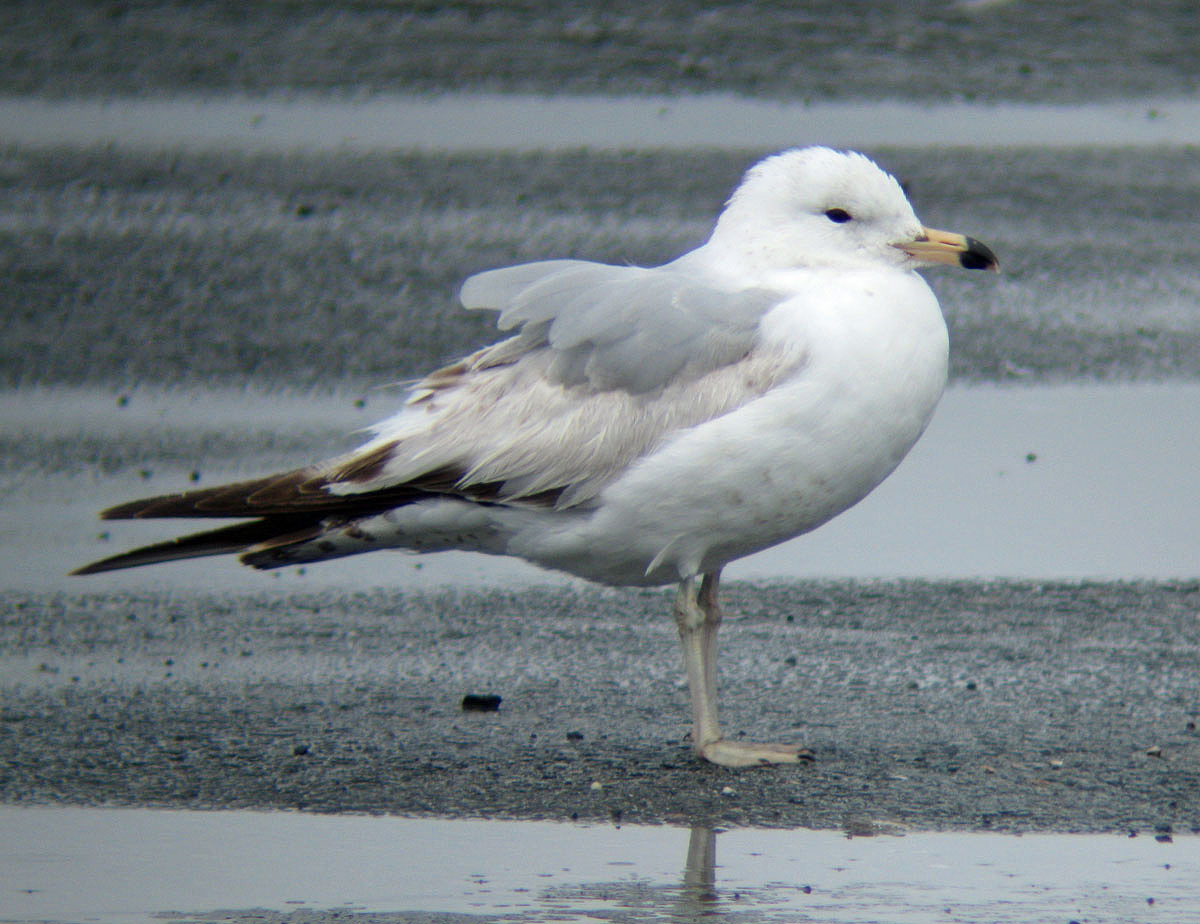|
|
Coordinators: 1cy June 2cy Jan 3cy Jan adult Jan |
Ring-billed Gull delawarensis 1st cycle (2CY), April 18 2010, Boston, MA. Picture: David Sibley.See David's site. The variation in appearance in 1st cycle April birds comes from four main sources, which all interact:
The bird below with the most heavily worn (and very pale) wing coverts are strikingly different from the darkest bird show in April. Presumably these very faded birds were the individuals that had the palest coverts in the fall (see 1st cycle October). These birds now also show a very pale whitish head and breast. The head and breast feathers should have been replaced in the spring molt, while the wing coverts are retained from last summer. So the white head and breast are the result of new, unpigmented feathers, while the white coverts are the result of excessive fading on old lightly pigmented feathers. So maybe birds that produce less pigment in the fall continue that trend in the spring? Or maybe a larger sample size would show no link between extremely faded wing coverts and white heads? Below: first-spring Ring-billed Gull. Wing coverts excessively worn and head and breast nearly pure white.
|
 delawarensis Ring-billed Gull
delawarensis Ring-billed Gull